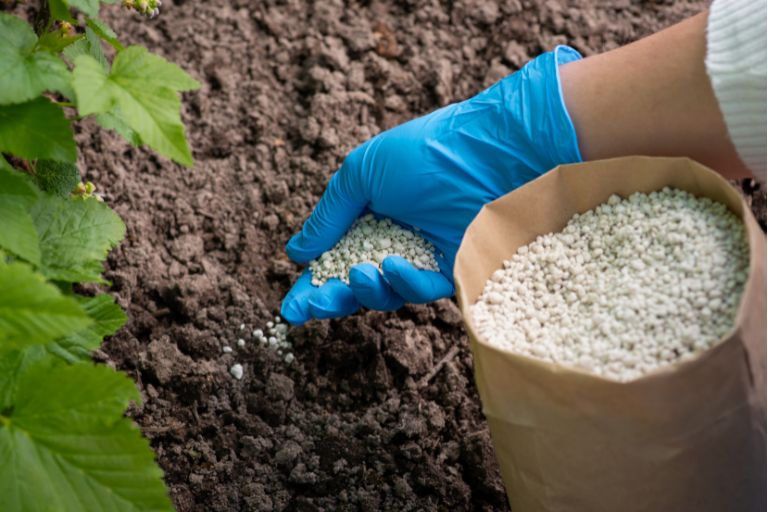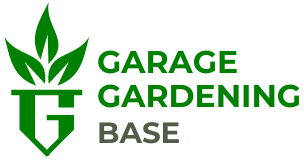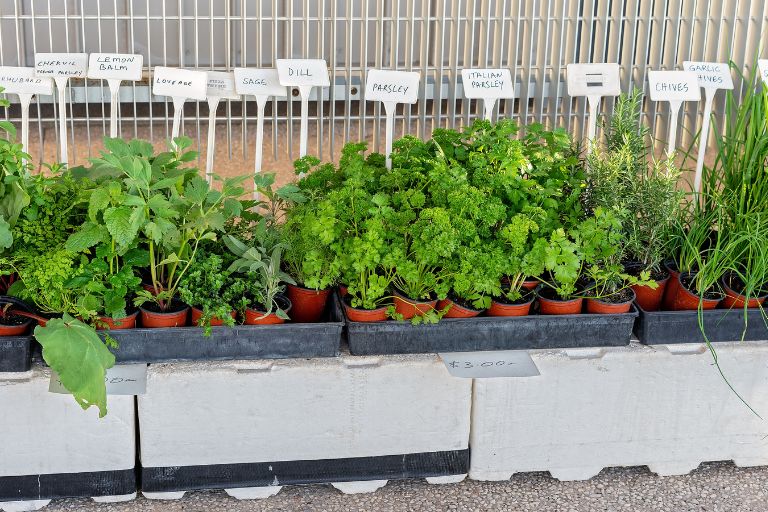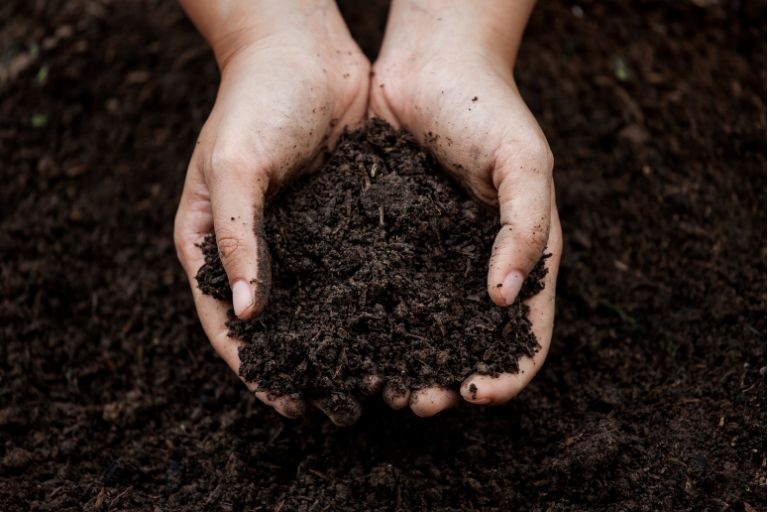Optimizing Growth: A Guide to Fertilizing Your Garage Garden

At a time when outdoor space is often at a premium, garage gardening has emerged as a creative solution for urban dwellers and gardening enthusiasts alike. Transforming a garage into a green sanctuary presents both unique opportunities and challenges, particularly in terms of the health and vitality of your plants. Central to the success of garage gardening is the art of effective fertilisation.
Welcome to this comprehensive guide to fertilising your garage garden. Throughout this article, we’ll be looking at the essential elements of fertilising specifically for the indoor gardener. Whether you’re a newcomer looking to grow your first garage garden or an experienced gardener looking to refine your indoor gardening skills, this guide is designed to give you the knowledge and techniques you need to grow thriving plants within the confines of your garage.
Along the way, we’ll uncover the importance of fertilization in supporting plant growth and development, explore the wide range of fertilizers suitable for indoor gardening, discuss practical application techniques tailored to the garage environment, and offer strategies for maintaining optimal soil health. Whether you’re envisioning a cascading tapestry of greenery adorning your garage shelves, or anticipating a bountiful harvest of fruits and vegetables from your indoor sanctuary, let’s unlock the secrets of vibrant and thriving indoor gardens through the mastery of fertilisation.
Introduction to Garage Gardening
In recent years, garage gardening has emerged as a compelling solution for urban dwellers and those with limited space. This innovative concept involves repurposing garages into thriving indoor gardens, catering to the needs of plant enthusiasts who crave greenery but lack traditional outdoor growing space. As the trend gains momentum, more and more people are discovering the joys and benefits of growing a garden within the confines of their garage.
Garage gardening offers a number of advantages that appeal to urban and space-constrained gardeners alike. Firstly, it allows year-round gardening, overcoming the limitations imposed by seasonal changes and adverse weather conditions. With a garage garden, garden enthusiasts can indulge their passion for plants regardless of the time of year, ensuring a continuous supply of fresh produce and ornamental plants.
Garage gardening also gives gardeners unprecedented control over environmental factors. By creating a controlled indoor environment, gardeners can regulate temperature, humidity and light levels to suit the specific needs of their plants. This level of precision promotes optimal growing conditions, resulting in healthier, more robust vegetation and increased crop yields.
In fact, the proximity of Garage Gardens to the home offers unparalleled convenience. Unlike traditional outdoor gardens, which may require a trek to the backyard or allotment, garage gardens are just steps away from the living space. This proximity simplifies gardening tasks, encourages regular maintenance and facilitates greater interaction with the garden, fostering a deeper connection with the growing process.
Understanding Fertilization
Fertilizers play a critical role in providing plants with essential nutrients for optimal growth and development. These nutrients are essential for various physiological processes within plants, which ultimately affect their overall health, vigour and productivity.
Macronutrients
Fertilizers provide plants with three primary macronutrients: nitrogen (N), phosphorus (P) and potassium (K), often referred to as NPK. Each of these nutrients has a different function in plant growth:
– Nitrogen (N) is essential for the formation of chlorophyll, the pigment responsible for photosynthesis, which is critical for energy production and overall plant vigour.
– Phosphorus (P) plays a critical role in root development, flowering and fruiting, as well as in the transfer and storage of energy within the plant.
– Potassium (K) contributes to overall plant health and resistance by regulating water uptake, improving disease resistance and increasing stress tolerance.
Micronutrients
In addition to macronutrients, fertilizers also provide plants with essential micronutrients, albeit in smaller amounts. These micronutrients, including iron, manganese, zinc, copper, boron and molybdenum, are involved in various metabolic processes and enzyme activities within the plant. Although needed in smaller amounts, micronutrients are just as important for proper growth, development and overall plant function.
Correcting nutrient deficiencies
Fertilizers are essential for correcting nutrient deficiencies in the soil. In environments where certain nutrients are lacking, plants may exhibit stunted growth, yellowing of leaves (chlorosis), and reduced yields. Fertilizer applications can replenish depleted nutrients, restore soil fertility and promote healthy plant growth.
Promoting balanced growth
Fertilizers help maintain a balanced ratio of nutrients in the soil, ensuring that plants have access to the nutrients they need in the right proportions. This balance is essential to prevent nutrient imbalances and deficiencies that can hinder plant growth and development.
Increase crop yields
By providing plants with the nutrients they need for optimal growth, fertilizers can significantly increase crop yields. Well-fertilized plants tend to be more vigorous, produce larger fruits or vegetables, and have higher overall yields than plants grown under nutrient-deficient conditions.
Plants require a number of essential nutrients to support their growth, development and overall health. Among these nutrients, nitrogen (N), phosphorus (P) and potassium (K), often referred to as NPK, are considered primary nutrients because of their critical roles in plant physiology. The following sections will discuss the functions of each of these primary nutrients:
Nitrogen (N)
Function – Nitrogen is an essential component of chlorophyll, the pigment responsible for capturing light energy during photosynthesis. Chlorophyll allows plants to convert carbon dioxide and water into sugars, providing the energy needed for growth and development.
Role in growth – Nitrogen is essential for promoting vegetative growth, including the development of leaves, stems, and branches. It also influences the synthesis of proteins, enzymes, and other essential molecules required for plant metabolism.
Effects of deficiency – Nitrogen deficiency can result in stunted growth, yellowing of leaves (chlorosis), and reduced overall vigour. Plants lacking nitrogen may show delayed flowering and fruiting, and reduced resistance to pests and diseases.
Phosphorus (P)
Function – Phosphorus plays a key role in energy transfer within plants, primarily through the conversion of adenosine triphosphate (ATP), a molecule that stores and releases energy during cellular processes. Phosphorus is also a structural component of DNA, RNA, and several other cellular components.
Role in growth – Phosphorus is essential for promoting root development, which facilitates nutrient uptake and water absorption. It also plays a critical role in flower formation, seed production, and overall plant reproductive processes.
Effects of deficiency – Phosphorus deficiency can result in reduced root growth, leading to poor nutrient uptake and water stress. Plants may exhibit dark green or purplish leaves, delayed flowering, and reduced fruit or seed production. In addition, phosphorus deficiency can affect overall plant vigour and resistance to environmental stresses.
Potassium (K)
Function – Potassium is involved in many physiological processes in plants, including enzyme activation, osmoregulation (regulation of water balance), and stomatal regulation (control of gas exchange and water loss). It is also involved in the synthesis of carbohydrates and proteins.
Role in growth – Potassium promotes overall plant health and vigour by increasing disease resistance, improving stress tolerance (such as drought and cold stress), and regulating water uptake and transpiration. It also affects fruit quality and shelf life.
Effects of deficiency – Potassium deficiency can cause symptoms such as leaf yellowing (chlorosis), leaf scorching or necrosis along leaf margins, and weakened stems. Plants deficient in potassium may exhibit reduced growth, increased susceptibility to disease and pests, and poor fruit development.
Choosing the right fertilizer is paramount to successful indoor gardening, especially in a garage environment where space and environmental control are key considerations. The following are some of the reasons it’s important to choose the right fertilizer:
Limited space – Indoor gardening, especially in the garage, often involves containers or limited growing areas. It’s important to choose fertilizers that work well for container gardening and don’t take up too much space. Liquid fertilizers or slow-release granular formulations are often preferred for their ease of application and minimal storage requirements.
Precision Nutrition – Indoor plants rely solely on the nutrients provided, as they do not have access to additional nutrients found in outdoor soil. Therefore, selecting fertilizers with balanced nutrient ratios is critical to ensuring that plants receive the proper nutrition for optimal growth and development. Look for fertilizers formulated specifically for indoor gardening, which typically contain the essential macronutrients (nitrogen, phosphorus, and potassium) in appropriate proportions.
Environmental considerations – Indoor environments, including garages, often have controlled lighting, temperature and humidity. Certain fertilizers may interact differently under these conditions than in outdoor environments. Choosing fertilizers designed for indoor use helps minimize the risk of nutrient imbalances, salt build-up or other adverse effects that can occur in confined spaces with limited ventilation.
Safety and convenience – Indoor gardening spaces, such as garages, are often used for purposes other than gardening. Choosing fertilizers that are safe for indoor use and easy to apply will ensure a hassle-free gardening experience. Water-soluble fertilizers or organic options are often preferred for their ease of use and reduced risk of causing odours or staining indoor surfaces.
Avoid chemical residues – Indoor gardening spaces, especially those located near residential areas, require special attention to the types of fertilizers used to avoid exposure to harmful chemicals. Choosing organic or natural fertilizers minimizes the risk of chemical residues and ensures a safer environment for both plants and people.
Types of Fertilizers
Organic Fertilizers
Compost
– Consists of decomposed organic matter such as kitchen scraps, yard trimmings, and manure.
– Rich in essential nutrients, including nitrogen, phosphorus, and potassium, as well as micronutrients.
Improves soil structure, moisture retention and microbial activity.
Manure
– Derived from animal waste such as cow, horse, or poultry manure. Contains nitrogen, phosphorus, potassium, and organic matter beneficial to plant growth.
– Requires proper composting or aging to reduce the risk of pathogens and weed seeds.
Bone Meal
– Made from ground animal bones and is high in phosphorus.
– Promotes strong root development and flowering in plants.
– Slow release nutrient source with long lasting effects.
Synthetic (Inorganic) Fertilizers
Nitrogen-based fertilizers
Ammonium nitrate
– High nitrogen fertilizer suitable for promoting vegetative growth.
– Quick release nitrogen source that provides rapid green-up of plants.
Urea
– Contains high nitrogen content and is widely used due to its cost effectiveness.
– Requires soil microbial activity for conversion to plant-available forms.
Phosphorus-based fertilizers
Triple superphosphate
– Concentrated phosphorus fertilizer suitable for promoting root development and flowering.
– Slow release phosphorus source that provides long-term benefits to plants.
Di-Ammonium Phosphate (DAP)
– Contains both nitrogen and phosphorus, making it a versatile fertilizer for promoting overall plant growth.
– Quick release nutrients that are readily available to plants upon application.
Potassium-based fertilizers
Potassium Chloride (Muriate of Potash)
– Contains high levels of potassium, essential for improving plant vigour, stress tolerance and fruit quality.
– Soluble form of potassium suitable for rapid plant uptake.
Potassium sulphate
– Provides potassium along with sulphur, beneficial for optimizing plant nutrition and growth.
– Suitable for use in soils that are deficient in both potassium and sulphur.
Controlled Release Fertilizers
Polymer Coated Fertilizers
– Nutrients encapsulated in polymer coatings for gradual release over time.
– Provides a steady supply of nutrients to plants, reducing the risk of nutrient leaching and runoff.
Slow-release granular fertilizers
– Contains nutrients embedded in granules designed to break down slowly over weeks or months.
– Ideal for long-term plant nutrition, minimizing the need for frequent applications.
– Helps maintain consistent nutrient levels in the soil, promoting balanced plant growth and minimizing nutrient wastage.
Liquid Fertilizers
Water-soluble fertilizers
– Dissolve readily in water, allowing for easy application through watering cans, drip irrigation, or foliar spraying.
– Provide rapid nutrient uptake by plants, making them suitable for correcting nutrient deficiencies or promoting rapid growth.
Organic Liquid Fertilizers
– Derived from organic sources such as seaweed, fish emulsion or compost extracts.
– Rich in nutrients and beneficial microorganisms that support overall plant health and vitality.
– Improves soil fertility and microbial activity, contributing to sustainable gardening practices.
The following is a brief discussion of the advantages and disadvantages of each type of fertilizer, considering factors such as nutrient availability, environmental impact, and cost:
Organic Fertilizer
Advantages
Nutrient Availability – Organic fertilizers provide a slow and steady release of nutrients, promoting balanced plant growth over time. Nutrients are typically bound in organic matter, which gradually decomposes and becomes available to plants as microbial activity increases.
Environmental impact – Organic fertilizers are derived from natural sources, making them environmentally friendly and sustainable. They improve soil structure, fertility and water retention, contributing to long-term soil health and ecosystem resilience.
Cost – Some organic fertilizers, such as compost and manure, can be obtained at little or no cost, especially when produced locally from organic waste materials.
Disadvantages
Nutrient concentration – Organic fertilizers often contain lower concentrations of nutrients than synthetic fertilizers, requiring higher application rates to meet plant needs.
Nutrient release time – The slow-release nature of organic fertilizers may not meet the immediate nutrient needs of plants, especially during periods of rapid growth or fruiting.
Potential contaminants – Organic fertilizers derived from animal manure may contain pathogens, weed seeds, or antibiotic residues that pose health risks if not composted or handled properly.
Synthetic (inorganic) fertilizers
Advantages
Nutrient availability – Synthetic fertilizers provide readily available forms of nutrients that can be rapidly absorbed by plants to correct nutrient deficiencies or promote rapid growth. They offer precise control over nutrient ratios, allowing for tailored fertilization strategies to meet specific plant needs.
Environmental impact – Synthetic fertilizers are highly soluble and quickly absorbed by plants, minimizing nutrient leaching and runoff when applied correctly. They offer high nutrient efficiency, minimizing the amount of fertilizer needed to achieve desired growth results.
Cost – Synthetic fertilizers are often more affordable and readily available than organic alternatives, making them a cost-effective choice for large-scale agriculture and commercial growers.
Disadvantages
Nutrient leaching – Excessive use of synthetic fertilizers can lead to nutrient leaching, which can contaminate groundwater and cause environmental pollution. Runoff of nitrogen and phosphorus from synthetic fertilizers can contribute to eutrophication of water bodies, leading to algal blooms and ecosystem degradation.
Soil health – Continued use of synthetic fertilizers without supplemental organic matter can degrade soil structure, reduce microbial activity, and deplete soil organic carbon over time.
Environmental pollution – The production, transportation, and application of synthetic fertilizers contribute to greenhouse gas emissions, energy consumption, and air pollution, exacerbating climate change and environmental degradation.
Controlled release fertilizer
Benefits
Nutrient efficiency – Controlled release fertilizers provide a steady supply of nutrients to plants over an extended period of time, reducing the frequency of applications and minimizing nutrient waste. They ensure optimal nutrient availability to plants, promoting balanced growth and minimizing the risk of nutrient deficiencies or excesses.
Environmental impact – Slow-release fertilizers help reduce nutrient leaching and runoff, protecting water quality and minimizing environmental impact. They provide a sustainable approach to fertilization that supports long-term soil health and ecosystem resilience.
Disadvantages
Cost – Controlled release fertilizers are often more expensive than traditional fertilizers up front, although they can offer cost savings in the long run due to reduced application frequency.
Variability of nutrient release – Factors such as temperature, soil moisture, and microbial activity can affect the rate of nutrient release from controlled-release fertilizers, potentially leading to variability in plant response and growth results.
Liquid fertilizer
Advantages
Nutrient Uptake – Liquid fertilizers provide nutrients in a readily available form that can be quickly absorbed by plants through roots or foliage. They are ideal for correcting nutrient deficiencies or promoting rapid growth, especially during critical growth phases or periods of stress.
Convenience – Liquid fertilizers are easy to apply using a variety of methods, such as watering cans, drip irrigation or foliar spraying, making them convenient for both indoor and outdoor gardening. They offer flexibility in application rates and timing, allowing for precise nutrient management based on plant needs and environmental conditions.
Disadvantages
Nutrient stability – Liquid fertilizers may have a shorter shelf life and can degrade over time, reducing nutrient effectiveness if not used promptly.
Potential for overfertilization – Liquid fertilizers applied in excess can cause nutrient imbalances, root burn, or leaf damage, especially if not properly diluted or applied according to label directions.
Environmental Impacts – Runoff from liquid fertilizers, especially from foliar applications, can contribute to nutrient leaching and environmental pollution if not managed carefully, especially in sensitive ecosystems or water bodies.

Fertilizer Application Techniques
The following are step-by-step instructions on how to effectively fertilize garage garden plants:
1. Choose the right fertilizer
Select a fertilizer product that meets the specific needs of your garage garden plants, considering factors such as nutrient requirements, stage of growth, and soil conditions.
2. Read and Follow Label Instructions
Before applying any fertilizer, carefully read and follow the manufacturer’s instructions on the product label. Pay attention to recommended application rates, frequency, and methods to avoid over-fertilization or nutrient imbalances.
3. Determine application method
Depending on the type of fertilizer and your preference, choose an appropriate application method, such as topdressing, soil incorporation, foliar feeding, or using fertilizer spikes or granules. Consider the size and type of plants, container size, and soil moisture level when selecting an application method.
4. Prepare fertilizer solution (if applicable)
If using liquid fertilizers, prepare the fertilizer solution according to the recommended dilution rate on the product label.
Use clean water and a suitable container to mix the fertilizer solution to ensure proper dissolution and even nutrient distribution.
5. Apply fertilizer to soil or growing medium
To top-dress or incorporate fertilizer into the soil, spread the fertilizer evenly over the soil surface or around the base of plants to ensure coverage of the root zone. Use a hand trowel, shovel or gardening fork to gently work the fertilizer into the soil, avoiding damage to plant roots. Water the soil thoroughly after fertilizing to activate the nutrients and promote plant uptake.
6. Apply fertilizer to plant foliage (if desired)
For foliar feeding, use a spray bottle or garden sprayer to apply the fertilizer solution directly to the leaves of the plants.
Ensure thorough coverage of both the upper and lower leaf surfaces and avoid excessive dripping or runoff. Apply foliar fertilizers in the early morning or late afternoon to minimize the risk of leaf burn from sunlight.
7. Monitor and Adjust Fertilization Practices
Regularly monitor plant growth, foliage colour and overall health to evaluate the effectiveness of your fertilization program.
Adjust fertilization practices as needed based on plant response, soil test results, and seasonal nutrient needs. Avoid over-fertilizing by following recommended application rates and frequency, and always err on the side of caution when applying fertilizer.
8. Maintain soil moisture and environmental conditions
Maintain adequate soil moisture and proper environmental conditions, such as temperature and humidity, to support optimal nutrient uptake and plant growth. Water plants as needed to prevent soil dryness or waterlogging, especially after fertilization, to facilitate nutrient uptake and minimize nutrient loss.
Follow these steps to effectively fertilize your garage garden plants using techniques such as top-dressing, foliar feeding, and incorporating fertilizer into the soil:
Top dressing
Top-dressing involves applying fertilizer directly to the soil surface around the base of plants.
1. Measure the recommended amount of fertilizer based on the plant’s nutrient needs and fertilizer label directions.
2. Gently sprinkle the fertilizer evenly over the soil surface within the plant’s drip line, avoiding direct contact with plant stems or foliage.
3. Use a hand trowel or rake to gently incorporate the fertilizer into the top layer of soil, ensuring even distribution and minimal disturbance to plant roots.
4. Thoroughly water the soil after topdressing to activate the fertilizer and facilitate nutrient uptake by plant roots.
Foliar feeding
Foliar feeding applies fertilizer directly to plant leaves for rapid nutrient uptake.
1. Prepare a fertilizer solution by diluting the appropriate amount of liquid fertilizer in water according to product label directions.
2. Transfer the fertilizer solution to a spray bottle or garden sprayer, ensuring thorough mixing and even nutrient distribution.
3. Apply the fertilizer solution evenly to the leaves of the plants, covering both the upper and lower leaf surfaces.
4. Avoid spraying the fertilizer solution during the hottest part of the day to prevent leaf scorching, and aim for early morning or late afternoon applications.
5. Allow the foliage to dry naturally after foliar feeding and avoid rinsing the fertilizer solution with water for several hours to maximize nutrient uptake.
Incorporating fertilizer into the soil:
Incorporating fertilizer into the soil involves mixing the fertilizer directly into the planting medium or soil to ensure even nutrient distribution.
1. Measure the recommended amount of fertilizer based on the plant’s nutrient needs and fertilizer label directions.
2. Use a hand trowel, gardening fork or shovel to make small furrows or holes in the soil around the base of the plant.
3. Sprinkle fertilizer evenly into the furrows or holes to ensure even distribution throughout the root zone.
4. Gently backfill the furrows or holes with soil, covering the fertilizer and compacting the soil lightly to ensure good soil-fertilizer contact.
5. Thoroughly water the soil after incorporating the fertilizer to activate the nutrients and promote uptake by plant roots.
When fertilizing indoor plants, it’s important to avoid common mistakes that can negatively affect plant health and growth. The following are some common mistakes to avoid:
Overfertilization
Mistake – Applying fertilizer too often or in excessive amounts can lead to over-fertilization, causing nutrient imbalances, root burn and leaf damage.
Solution – Follow the recommended fertilization schedule and dosage as stated on the fertilizer label. More is not always better when it comes to fertilizing houseplants. Stay within the recommended application rates and frequency to avoid over-fertilization.
Improper application
Mistake – Applying fertilizer directly to plant foliage or stems can result in leaf burn and damage, especially when using concentrated liquid fertilizers.
Solution – Apply fertilizer directly to the soil around the base of plants, avoiding contact with plant foliage. For liquid fertilizers, water the soil thoroughly after application to prevent leaf burn and ensure proper nutrient uptake by plant roots.
Neglect soil moisture
Mistake – Applying fertilizer to dry soil or allowing the soil to become excessively dry after fertilizing can hinder nutrient uptake by plant roots and lead to nutrient deficiencies.
Solution – Water the soil thoroughly before applying fertilizer to ensure optimum soil moisture. After fertilizing, water the soil again to activate the nutrients and promote uptake by plant roots.
Ignoring plant signs and symptoms
Mistake – Failure to observe and respond to signs of nutrient deficiency or excess, such as yellowing leaves, leaf drop, or stunted growth, can exacerbate plant health problems.
Solution – Monitor your houseplants regularly for signs of nutrient deficiency or excess. Adjust fertilization practices based on plant response, soil test results, and seasonal nutrient needs.
Using the wrong type of fertilizer
Mistake – Using the wrong type of fertilizer, such as a high-nitrogen fertilizer for flowering plants or a slow-release fertilizer for fast-growing plants, can result in suboptimal growth results.
Solution – Select a fertilizer product that is specifically formulated for the type of houseplants you are growing and their specific nutrient needs. Choose fertilizers with balanced nutrient ratios that are suitable for indoor gardening environments.
Failure to follow fertilizer instructions
Mistake – Ignoring or misinterpreting the instructions on the fertilizer label can lead to improper application and ineffective nutrient uptake by plants.
Solution – Always read and follow the manufacturer’s instructions on the fertilizer label. Pay attention to recommended application rates, frequency and methods to ensure proper fertilization practices.
Maintaining Soil Health
Maintaining soil fertility and structure is critical to plant health and productivity in a garage garden environment. The following are some tips to help you achieve and maintain optimal soil conditions:
Regular soil testing
– Conduct regular soil tests to assess nutrient levels, pH, and overall soil health. Soil test kits are readily available and provide valuable insight into the fertility status of your soil.
– Adjust fertilization practices based on soil test results to correct nutrient deficiencies or imbalances and ensure optimal plant nutrition.
Amend soil with organic matter
– Incorporate organic matter, such as compost, aged manure, or organic soil amendments, into the soil to improve its fertility, structure, and water-holding capacity.
– Organic matter provides essential nutrients, promotes beneficial microbial activity, and improves soil structure, creating an optimal growing environment for the plants in your garage garden.
Mulch
– Apply a layer of organic mulch, such as straw, wood chips, or shredded leaves, to the soil surface to conserve moisture, suppress weed growth, and regulate soil temperature.
– Mulching also helps prevent soil compaction, erosion and nutrient leaching, and promotes healthy root development and overall soil health.
Avoid soil compaction
– Minimize foot traffic and heavy equipment use in your garage garden to prevent soil compaction, which can hinder root growth, water infiltration, and nutrient uptake.
– Use raised beds or containers filled with well-draining potting mix to avoid compacted soil and provide optimal growing conditions for plants.
Crop Rotation
– Practice crop rotation by alternating plant species or families in different areas of your garage garden each growing season.
– Crop rotation helps prevent nutrient depletion, soil-borne diseases, and pest infestations while promoting balanced soil fertility and structure over time.
Water Management
– Water your garage garden plants consistently and adequately to maintain optimal soil moisture levels.
– Avoid overwatering, as excess moisture can lead to soil compaction, root rot, and nutrient leaching. Use a moisture meter or your finger to measure soil moisture before watering.
Companion planting
– Incorporate companion plants, such as nitrogen-fixing legumes or dynamic accumulators, into your garage garden to naturally improve soil fertility.
– Companion plants can enrich the soil with nitrogen, increase organic matter levels, and attract beneficial insects, contributing to overall soil health and plant vigour.
Minimize chemical inputs
– Limit the use of synthetic fertilizers, pesticides, and herbicides in your garage garden to avoid soil contamination and adverse effects on soil microbiota.
– Choose organic gardening practices such as composting, crop rotation, and biological pest control to promote soil fertility, biodiversity, and ecological balance.
Regular soil testing and pH monitoring are essential practices for maintaining healthy soil and promoting optimal plant growth. The following is why they’re important:
Assess nutrient levels
– Soil testing allows you to assess the levels of essential nutrients such as nitrogen, phosphorus, potassium, calcium and magnesium in your soil.
– Knowing the nutrient status of your soil helps you make informed decisions about fertilization practices to ensure plants receive the nutrients they need for healthy growth and productivity.
pH regulation
– Soil pH, a measure of soil acidity or alkalinity, has a profound effect on nutrient availability and plant health.
– Different plants have specific pH preferences, and maintaining the appropriate soil pH range for your target crop is critical for optimal nutrient uptake and growth.
– Acidic soils (low pH) can inhibit the availability of essential nutrients such as phosphorus, calcium and magnesium, while alkaline soils (high pH) can lead to micronutrient deficiencies and toxicity problems.
Prevent nutrient imbalances
– Imbalances in soil pH can disrupt nutrient uptake and lead to nutrient imbalances in plants, even when sufficient nutrients are present in the soil.
– For example, acidic soils with low pH levels can cause aluminium and manganese toxicity, while alkaline soils with high pH levels can cause deficiencies of iron, zinc and other micronutrients.
– Regular pH monitoring will help you maintain soil pH within the optimal range for your plants, minimizing the risk of nutrient imbalances and associated growth problems.
Environmental impact
– Understanding soil fertility and pH levels is essential to sustainable gardening practices and environmental stewardship.
– By optimizing soil conditions through regular testing and monitoring, you can minimize the need for excessive fertilization and reduce the risk of nutrient runoff, leaching and groundwater contamination.
– Maintaining healthy soil pH levels also promotes beneficial soil microbial activity, improves soil structure and fertility, and contributes to overall ecosystem health and resilience.
Organic practices play an important role in improving soil health and fertility over time, promoting sustainable gardening and long-term productivity. The following are some recommended organic practices for improving soil health and fertility:
Composting
– Composting is the process of decomposing organic materials such as food scraps, yard waste, and plant debris into nutrient-rich compost.
– Compost adds valuable organic matter to the soil, improving soil structure, water retention, and nutrient availability.
– Start a compost pile or bin in your garage garden to recycle organic waste and produce homemade compost for soil amendment.
– Use compost as a natural fertilizer and soil conditioner by incorporating it into garden beds, mixing it with potting soil for container gardening, or top-dressing around established plants.
Cover crops
– Cover cropping is the practice of planting specific crops, known as cover crops or green manures, to cover and protect the soil during periods of dormancy or between main crop seasons.
– Cover crops help prevent soil erosion, suppress weeds, and add organic matter to the soil through biomass production and decomposition.
– Select cover crops based on their ability to fix nitrogen, improve soil structure, or provide other beneficial services such as nutrient sequestration or pest suppression.
– Incorporate cover crops into your crop rotation plan to improve soil fertility, break pest and disease cycles, and maintain soil health over time.
Crop Rotation
– Crop rotation is the practice of alternating different plant species or families in specific garden areas each growing season.
– Crop rotation helps prevent nutrient depletion, soil-borne diseases, and pest build-up by disrupting their life cycles and reducing reliance on chemical inputs.
– Plan rotations based on crop nutrient needs, soil health considerations, and pest management goals.
– Include nitrogen-fixing legumes such as peas, beans, or clover in your rotation to naturally replenish soil nitrogen levels and improve overall soil fertility.
Mulching
– Mulching involves applying a layer of organic material, such as straw, leaves, or grass clippings, to the soil surface around plants.
– Organic mulches help conserve soil moisture, suppress weeds, regulate soil temperature, and promote microbial activity and nutrient cycling.
– Use mulch to cover bare soil in garden beds, around trees and shrubs, and in container gardens to improve soil health and reduce maintenance.
– As mulch decomposes, it adds organic matter to the soil, improving fertility and supporting plant growth.
No-till gardening
– No-till gardening minimizes soil disturbance by avoiding mechanical tillage and growing crops directly in undisturbed soil or mulch layers.
– No-till practices preserve soil structure, microbial communities, and beneficial soil organisms, promoting soil health and biodiversity.
– Adopt no-till techniques in your garage garden by layering organic mulch, practicing surface tillage, and using raised beds or permanent planting areas to minimize soil compaction and erosion.
Troubleshooting
Garage garden fertilization can present several common problems, including nutrient deficiencies and toxic build-up. The following is how to effectively address these problems:
Nutrient Deficiencies
Symptoms
Nutrient deficiencies can manifest as yellowing leaves, stunted growth, poor fruit development, or leaf discoloration. Common nutrient deficiencies include nitrogen (N), phosphorus (P), potassium (K), iron (Fe), and magnesium (Mg).
Solution
– Conduct a soil test to accurately identify nutrient deficiencies and adjust fertilization practices accordingly.
– Select a fertilizer product that contains the deficient nutrients and apply at the recommended rate and frequency.
– Consider supplementing with organic amendments or foliar sprays containing the deficient nutrients for quick correction.
– Monitor plant response and adjust fertilization as needed to maintain optimal nutrient levels and promote healthy growth.
Toxic accumulation
Symptoms
Toxic accumulation of nutrients, especially soluble salts such as sodium (Na) and chloride (Cl), can cause leaf burn, leaf edge browning, wilting, or reduced plant vigour.
Solution
– Avoid over-fertilization and excessive use of synthetic fertilizers, which can contribute to salt build-up in the soil.
– Periodically flush the soil with plain water to leach out excess salts and restore soil balance.
– Incorporate organic matter into the soil to improve soil structure and reduce the risk of nutrient leaching and salt accumulation.
– Select fertilizers with a low salt index or opt for slow-release formulations to minimize the risk of salt build-up over time.
– Monitor soil moisture levels and irrigation practices to ensure proper water management and prevent salt accumulation in the root zone.
pH imbalance
Symptoms
Soil pH imbalance can affect nutrient availability and uptake, leading to nutrient deficiencies or toxicity in plants. Acidic soils (low pH) can inhibit the availability of essential nutrients such as phosphorus, calcium, and magnesium, while alkaline soils (high pH) can lead to micronutrient deficiencies.
Solution
– Test soil pH regularly to monitor soil acidity or alkalinity.
– Adjust soil pH as needed by adding organic amendments such as compost, peat moss, or elemental sulphur to lower pH or lime to raise pH.
– Select plants that are adapted to the natural pH of your soil or choose pH-neutral fertilizers to minimize pH-related problems.
– Maintain proper soil moisture levels and avoid waterlogging, which can exacerbate pH imbalances and nutrient uptake problems.
Improper application
Symptoms
Improper fertilization practices, such as over-fertilization, uneven application, or application to foliage, can lead to nutrient imbalances, leaf burn, or environmental contamination.
Solution
– Carefully follow the manufacturer’s instructions on fertilizer labels, including recommended application rates, timing, and methods.
– Apply fertilizer directly to the soil around the base of plants, avoiding contact with foliage to prevent leaf burn and nutrient loss.
– Measure fertilizer accurately and spread it evenly over the soil surface to ensure even nutrient distribution and uptake by plants.
– Avoid fertilizing during periods of extreme heat or drought as plants may be more susceptible to nutrient stress and damage.
The following are some troubleshooting tips and solutions for correcting nutrient imbalances and maintaining plant health in your garage garden:
Recognize symptoms of nutrient imbalances
– Observe your plants for symptoms of nutrient deficiencies or excesses, such as yellowing leaves, stunted growth, leaf discoloration, or leaf burn.
– Use a plant nutrient deficiency chart or guide to identify specific nutrient deficiencies based on observed symptoms.
Conduct a soil test
– Conduct a soil test to accurately assess nutrient levels, pH and other soil properties.
– Soil tests provide valuable information to diagnose nutrient imbalances and guide corrective action.
Adjust fertilization practices
– Based on soil test results and plant symptoms, adjust your fertilization practices to correct nutrient imbalances.
– Select fertilizers with appropriate nutrient ratios and apply at recommended rates and frequencies to meet plant needs.
Address specific nutrient deficiencies
Nitrogen (N) – Apply nitrogen-rich fertilizers such as blood meal, fish emulsion, or composted manure to promote healthy leaf growth and vibrant foliage.
Phosphorus (P) – Use phosphorus fertilizers such as bone meal or rock phosphate to promote root development, flowering and fruit set.
Potassium (K) – Use potassium-rich fertilizers, such as seaweed meal or wood ash, to improve plant vigour, disease resistance and fruit quality.
Iron (Fe) or Magnesium (Mg) – Supplement with chelated iron or Epsom salt (magnesium sulphate) as a foliar spray or soil drench to address specific micronutrient deficiencies.
Use organic amendments
– Incorporate organic matter such as compost, aged manure, or organic soil amendments into the soil to improve fertility, structure, and nutrient availability.
– Organic amendments provide a slow-release source of nutrients and promote beneficial microbial activity, improving soil health and plant nutrition over time.
Apply foliar nutrition
– Address nutrient deficiencies quickly by applying water-soluble fertilizers or nutrient solutions directly to plant foliage as a foliar spray.
– Foliar feeding provides rapid nutrient uptake by plants and can help alleviate symptoms of nutrient deficiencies, especially during periods of rapid growth or stress.
Practice balanced fertilization
– Avoid over-fertilization or uneven application of fertilizer, which can lead to nutrient imbalances, salt build-up, and environmental pollution.
– Follow recommended fertilization rates and timing, and ensure even nutrient distribution throughout your garage garden to maintain plant health and productivity.
Monitor and adjust pH levels
– Regularly monitor and adjust soil pH levels as needed to maintain optimal nutrient availability and uptake by plants.
– Incorporate pH-adjusting amendments such as lime (to raise pH) or elemental sulphur (to lower pH) based on soil test results and plant needs.
Maintain proper irrigation practices
– Maintain adequate soil moisture by watering plants consistently and evenly to avoid both waterlogging and drought stress.
– Proper watering practices support nutrient uptake and plant health, minimizing the risk of nutrient imbalances and related problems.
Monitor plant response and adjust as needed
– Continually monitor plant growth, foliage colour, and overall health to assess the effectiveness of corrective actions.
– Adjust fertilization practices, soil amendments, and irrigation schedules as needed based on plant response and environmental conditions.
Maintaining optimal soil fertility and nutrient balance is essential for the health and productivity of plants in a garage garden. By implementing organic practices such as composting, crop rotation, and mulching, gardeners can improve soil structure, increase nutrient availability, and foster a thriving ecosystem. However, challenges such as nutrient deficiencies, toxic build-up, and pH imbalances can arise and require careful attention and corrective action. Through regular soil testing, thoughtful fertilization practices, and proactive monitoring, gardeners can effectively address these issues and promote healthy plant growth.





